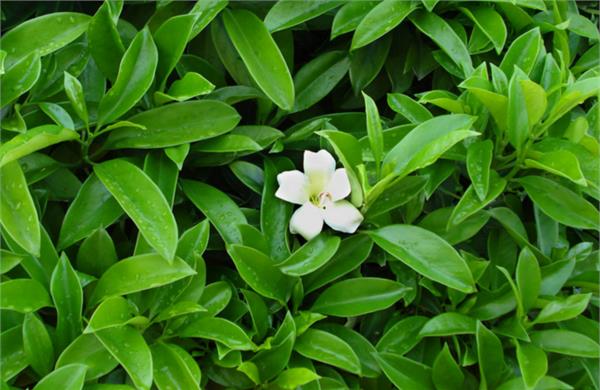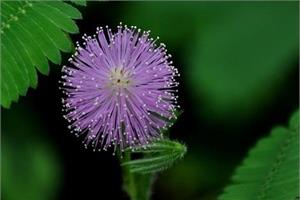Flowering time of potted tulips how to cultivate tulips
African jasmine, formerly known as ash wood, is a kind of shrub or small tree. This kind of plant is also very common. Let's take a look at the reason why African jasmine loses its leaves and the solution to it.

The reason why African jasmine has lost its leaves:
1. The reason of soil replacement. The pot soil of African jasmine has to be changed every one to two years. After changing the soil, the original root system can not carry the water consumption of the upper leaves, so the plant must abandon some of the evaporated leaves. It is also possible that there is a lack of certain trace elements, but it is highly unlikely.
2. The reason for watering. Too much or too little watering will affect the growth of African jasmine, causing the leaves of African jasmine to turn yellow and fall off. When the basin soil is too dry, the root water supply is insufficient to meet the needs of the plant, so that the leaves fall off due to lack of water; if the basin soil is too wet, it will affect the respiration of the root system, and seriously cause the rotten roots of the plant, and the leaves will wither if the nutrients are not supplied.
3. the reason of low temperature. African jasmine is a tropical plant, which needs a higher growth temperature. when the temperature is below 5 degrees Celsius, it will stop growing and its leaves are easy to fall.
4. The reason of light. African jasmine like light, avoid strong light, growth requires sufficient scattered light, or placed near the window, should not be too dark, otherwise lead to leaf loss of green yellowing or shedding.
5. The influence of diseases and insect pests. Some diseases and pests can also cause the leaves of African jasmine to turn yellow or fall off.
African jasmine leaf drop solution:
1. When breeding African jasmine, we should pay attention to its demand for water, the water is sufficient, but the roots should not accumulate water, watering in spring and autumn to keep the basin soil moist, beware of stagnant water in the plum rain season, in the hot summer, spray water once in the morning and afternoon to humidify and cool down, it is appropriate to keep the basin soil slightly tidal in winter, and spray an appropriate amount of water to the leaves when the temperature is relatively high around noon.
2. Keep good indoor temperature and ventilation.
3. Put the African jasmine bonsai in a place where you can get to the sun, and pay attention to shading when the sun is strong.
4. Potted plants in northern China, in order to prevent leaf yellowing, 0.2% ferrous sulfate was added during the growing season. Base fertilizer should be fully applied when planting in the ground, and cake fertilizer should be applied in trenches around the root system at the end of autumn, 0.5 to 1 kg per plant.
5. Pay attention to the control of common diseases and insect pests of African jasmine.
What if African jasmine loses its leaves?
The growth of African jasmine is picky about the environment. If it is not properly maintained, it is easy to grow slowly and often lose leaves, which is particularly common in the north. African jasmine is an ornamental plant, which is bare when its leaves fall off, losing its ornamental value, so the most common way to save African jasmine from losing its leaves is to "truncate branches and promote new leaves". Let's see how to do it:
1. Water control was carried out before May Day after the beginning of spring to dry African jasmine plants for a period of time.
2. After May Day, the plant was first heavily truncated, leaving 2-3 bud holes in the base of the surrounding branches, all the rest were cut off, and none of the leaves were left.
3. Immediately change the basin after a short cut, apply sufficient bottom fertilizer, and then fully water it many times, and do not water until a large number of new buds appear.
4. keep it in a cool and ventilated place, pay attention to observation at this time, prevent insects and diseases, and protect buds are very important.
5. after the buds increase gradually, pay attention to the planned choice and grow according to the expected plant type. at the same time, the dry branches should be cut off at any time.
6. 3 months after truncation, the sun should be seen gradually, and the moisture should be sufficient, but it should not be waterlogged, so pay attention to maintenance.
The above is the relevant introduction of this article, I believe you have a simple understanding of this after reading it, if necessary, you can continue to pay attention to the No. 1 home network for more information.
Related
- Wuhan Hospital Iron Tree Blooming Result Was Instantly Frightened by the Gardener Master
- Which variety of camellia is the most fragrant and best? Which one do you like best?
- What is the small blue coat, the breeding methods and matters needing attention of the succulent plant
- Dormancy time and maintenance management of succulent plants during dormancy
- Minas succulent how to raise, Minas succulent plant pictures
- What are the varieties of winter succulent plants
- How to raise succulent plants in twelve rolls? let's take a look at some experience of breeding twelve rolls.
- Attention should be paid to water control for succulent plants during dormant period (winter and summer)
- Watering experience of twelve rolls of succulent plants
- Techniques for fertilizing succulent plants. An article will let you know how to fertilize succulent plants.



